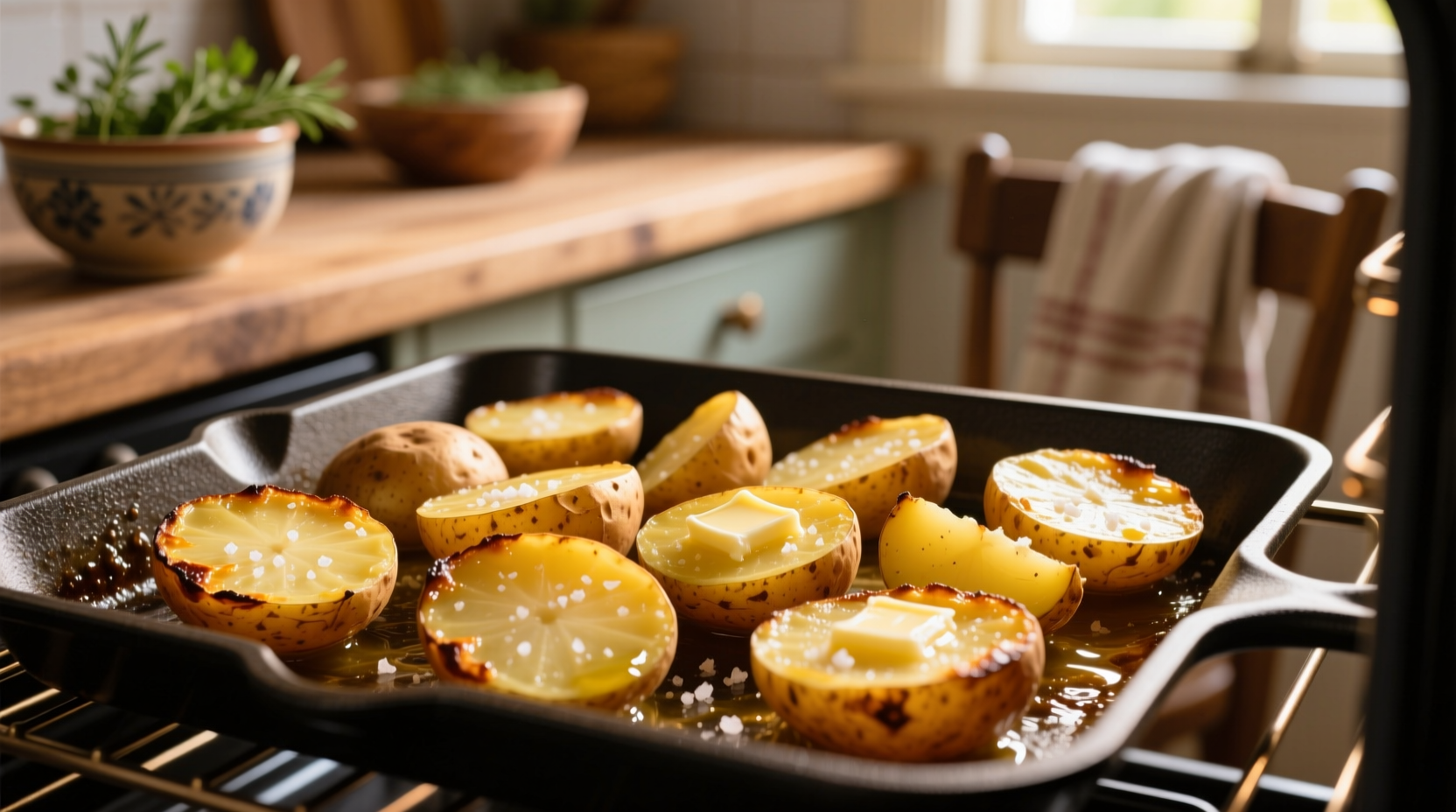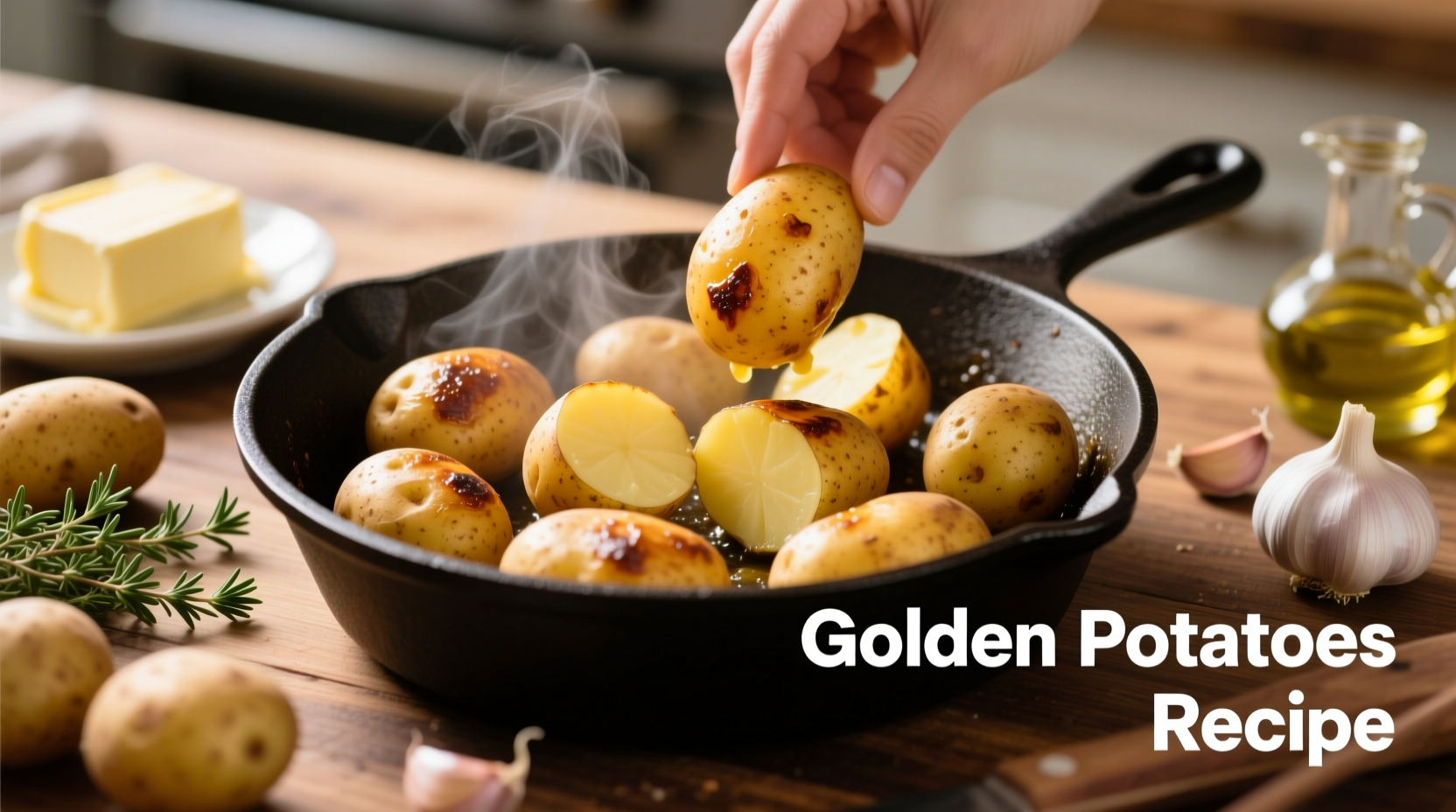Golden potatoes like Yukon Golds have become kitchen staples for good reason. Their naturally buttery flavor and creamy texture make them incredibly versatile, but many home cooks struggle to achieve that perfect balance of crispy edges and tender centers. After testing dozens of methods across professional kitchens and home stoves, I've identified the precise techniques that transform these humble tubers into showstopper side dishes.
Why Golden Potatoes Deserve Special Attention
Unlike russets or red potatoes, golden varieties like Yukon Gold contain medium starch content (15-18%) with higher moisture levels. This unique composition creates that signature buttery texture but requires specific handling. According to the Irish Agriculture and Food Development Authority, golden potatoes' balanced starch-to-moisture ratio makes them "the ideal all-purpose potato" suitable for multiple cooking methods without disintegrating.
| Potato Type | Starch Content | Best Cooking Methods |
|---|---|---|
| Golden (Yukon Gold) | Medium (15-18%) | Roasting, boiling, mashing, sautéing |
| Russet | High (20-22%) | Baking, frying, mashing |
| Red | Low (12-14%) | Boiling, salads, steaming |
Preparation: The Critical First Step
Proper preparation determines your final results more than any other factor. Start with these non-negotiable steps:
- Selection: Choose firm potatoes without green spots or sprouts (green indicates solanine, a natural toxin)
- Cutting: Uniform 1-inch cubes ensure even cooking - larger pieces won't crisp properly
- Drying: Pat thoroughly with paper towels - moisture prevents browning
- Pre-soaking (optional): For extra-crispy results, soak cut potatoes in cold water for 30 minutes to remove surface starch
Mastering the Roasting Method
Roasting delivers the best texture contrast - crispy outside with creamy interior. Follow this chef-tested process:
- Preheat oven to 400°F (200°C) with rack in upper third
- Toss potato cubes with 1½ tablespoons olive oil per pound of potatoes
- Add seasoning: ¾ teaspoon salt, ¼ teaspoon black pepper, and your choice of herbs
- Spread in single layer on parchment-lined baking sheet (crowding causes steaming)
- Roast 20 minutes, flip pieces, then roast 15-25 minutes more until golden brown
According to USDA Food Science Research, potatoes reach optimal texture at 205-210°F internally. Insert an instant-read thermometer into the largest piece to verify doneness - this prevents under or overcooking.

Alternative Cooking Methods
Boiling for Salads and Mashed
Cover potatoes with cold salted water (1 tablespoon salt per quart). Bring to gentle boil, then reduce heat and simmer 12-15 minutes until fork-tender. Drain immediately and return to pot for 1 minute to evaporate excess moisture - crucial for non-watery mashed potatoes.
Pan-Frying for Crispy Edges
Heat 2 tablespoons oil in cast-iron skillet over medium-high. Add potatoes in single layer (don't overcrowd). Cook 6-8 minutes per side without disturbing to develop crust. Finish with garlic and fresh herbs during last 2 minutes.
Flavor Pairing Guide
Golden potatoes' buttery flavor pairs beautifully with:
- Herbs: Rosemary, thyme, dill, chives
- Acids: Lemon zest, apple cider vinegar, white wine vinegar
- Fats: Extra virgin olive oil, browned butter, duck fat
- Umami boosters: Parmesan cheese, smoked paprika, garlic confit
For restaurant-quality results, add acid after cooking - it brightens flavors without breaking down the potatoes during cooking.
Common Mistakes and How to Avoid Them
- Mistake: Adding potatoes to already boiling water
Solution: Always start in cold water for even cooking - Mistake: Overcrowding the baking sheet
Solution: Use two sheets if necessary - proper air circulation creates crispiness - Mistake: Seasoning too early when roasting
Solution: Salt draws out moisture - add salt after the first 20 minutes of roasting
Storage and Reheating Tips
Store cooked golden potatoes in airtight container in refrigerator for up to 4 days. For best reheating results:
- Oven method: 375°F (190°C) for 15-20 minutes on baking sheet
- Air fryer: 350°F (175°C) for 8-10 minutes
- Avoid microwave: Creates uneven texture and sogginess
The University of Minnesota Extension recommends storing raw potatoes in cool, dark place between 45-50°F (7-10°C). Never refrigerate raw potatoes - cold temperatures convert starch to sugar, causing discoloration when cooked.











 浙公网安备
33010002000092号
浙公网安备
33010002000092号 浙B2-20120091-4
浙B2-20120091-4